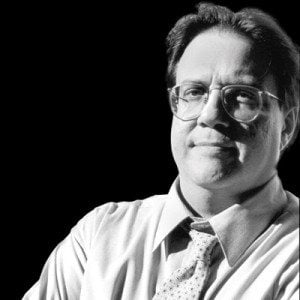An Extraordinary Legacy for Legacy Media

A version of this story ran in the March 2012 issue.
I recently exchanged emails with a reader about whether one has to have some sort of socio-cultural DNA to actually get this place—to really decipher Texas. Do you have to be from here to understand here, and to do the public-service journalism that is the connective tissue between justice and truth?
An easy answer is embodied in the extraordinary legacy of the late Barbara Karkabi, one of the finest journalists in the state—ever. To me and countless other journalists, she was proof that if you carry enough love and understanding into the contract you broker with the people you interview, then you can produce civic-minded journalism that matters.
Karkabi was raised in New York City and began her journalism career in war-torn Beirut before becoming a stalwart of the news scene in Houston. She passed away recently at the age of 65 after a long battle with cancer. She leaves behind a devoted husband (Mike Snyder, another bastion of Houston journalism) and daughter. She also leaves behind a body of work that shows boundless empathy and compassion—and how we are all far more alike than different.
Barbara rolled up her sleeves each day for almost 30 years to work for the often derided mainstream media, and courageously wrote about subjects that made the editors of the Houston Chronicle uncomfortable. When I worked with her in the early 1980s, the Houston Endowment ran the paper like the Great Eye of Sauron, staring down and sometimes condemning coverage of what Barbara knew had to be addressed: women’s rights, poverty, and the mistreatment and neglect of ethnic populations, immigrants and refugees.
She fought the good fight and stood her ground with humor, grace, and generosity. And she introduced Houstonians to people, to worlds, that were often hidden in plain sight.
She wrote about a hunger strike by Baylor College of Medicine student Ahilan Sivaganesan. The doctor-in-training was fasting to draw attention to the ethnic conflict engulfing the Tamil people of Sri Lanka. Barbara hooked Houston into a global humanitarian concern and let readers know about that young man’s human rights group, People for Equality and Relief in Lanka.
She told the story of another Houstonian, Anjum Bilgrami, who honored the Muslim month of Muharram by visiting his mosque to pray for healing—especially amid the ceaseless strife in Gaza.
And in what is now an oft-told tale in Houston media circles, Barbara once wrote about cost-effective medications that could save countless people from river blindness, a parasitic disease associated with poor and developing nations. Upon reading her story, Houston philanthropist John Moores gave $25 million to fund an initiative by a University of Houston professor to get the medicine to the people who needed it most. That is the very definition of cause-and-effect journalism.
She helped found the Association for Women Journalists in Houston. She was long admired by Houston feminists for her work on the board of the Friends of Women’s Studies, affiliated with the University of Houston’s women’s studies program.
The New York Times’ Samuel G. Freedman talks about great journalism existing on a temporal axis and an eternal axis. Good stories and good journalists are of the moment, but they also open a window on timeless values. Barbara did that, by design, and by dint of her smarts. It was her spiritual gift to her readers. She covered a seemingly hard, divisive Houston and found its multi-hued soul.
Her brilliant colleague at the Chronicle—her friend Claudia Feldman—has called Barbara “humble.” That is so perfect. Barbara treated people in the newsroom and in interview settings with care, dignity and life-affirming humor. She was self-effacing. She listened to people; she listened to the heartbeat of her city.
In the end, she was a writer who showed so many “ordinary people” in her adopted state to be truly extraordinary. Her work, day in and day out, proved that no matter where we are from, we ultimately have more in common than we know. She was an example for journalists in a melting-pot country called Texas.


